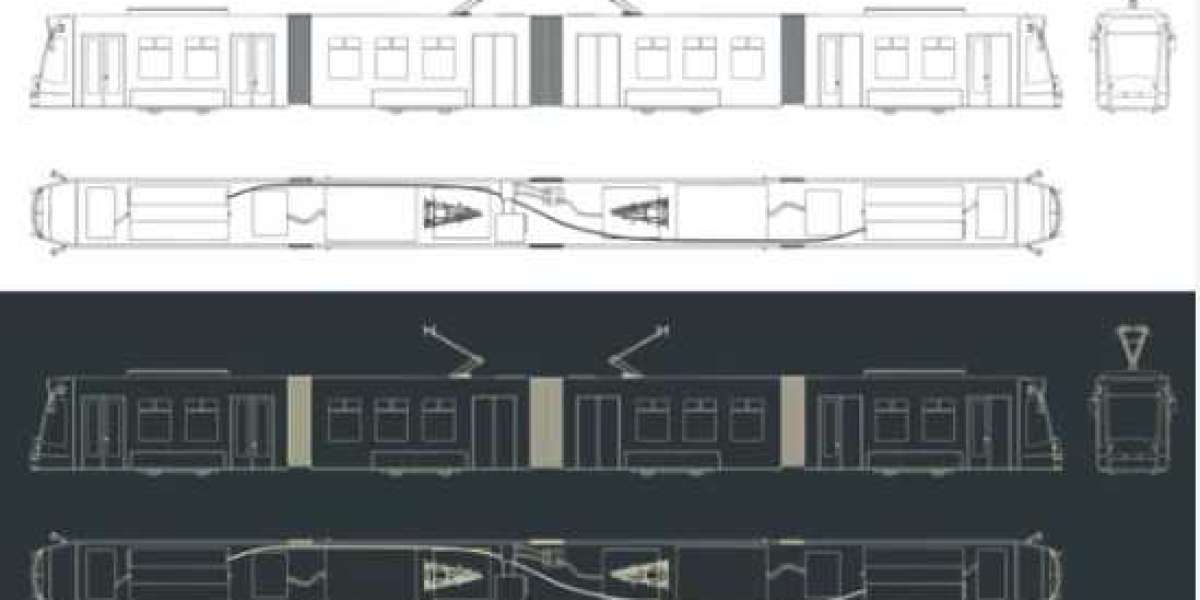When embarking on the journey to secure a patent for your invention, it’s essential to recognize the multifaceted role that patent drawings play in the patent application process. These visual representations of your innovation are far more than mere illustrations; they are instrumental in enhancing the clarity, comprehension, and overall effectiveness of your patent application. In this comprehensive guide, we will delve into the significance of patent drawings and explore strategies for maximizing their impact on your patent application.
The Significance of Patent Drawings
In the intricate world of patents and intellectual property, the significance of patent drawings cannot be overstated. These visual representations of inventions are not mere embellishments; they are powerful tools that play a multifaceted role in the patent application process. In this article, we will delve into the profound importance of patent drawings and how they contribute to the success of patent applications.
- Enhancing Clarity and Comprehension
One of the primary functions of patent drawings is to enhance the clarity and comprehension of an invention. In the realm of innovation, conveying complex ideas through words alone can be a formidable challenge. This is where patent drawings step in as invaluable aids.
Imagine explaining the intricate design of a mechanical device, the structural composition of a chemical compound, or the intricate configuration of a technological breakthrough solely through text. The limitations of words become evident. Patent drawings bridge this gap by providing a visual representation of the invention, offering a level of clarity and understanding that words alone cannot achieve.
- Facilitating the Patent Examination Process
The patent application process involves a rigorous examination by patent examiners, individuals tasked with evaluating the novelty, non-obviousness, and utility of an invention. This examination process can be significantly expedited and made more efficient with well-crafted patent drawings.
Patent examiners rely on these drawings to quickly grasp the essential features and components of an invention. By providing visual aids, inventors help examiners understand innovations more rapidly, streamlining the evaluation process. This not only saves time but also reduces the likelihood of misunderstandings or misinterpretations, ultimately benefiting the inventor.
- Expanding the Scope of Protection
Well-prepared patent drawings possess the power to expand the scope of protection offered by a patent. While the written description defines the boundaries of patent claims, patent drawings can illustrate variations, embodiments, and additional applications of an invention.
By including multiple views, cross-sections, or exploded views in patent drawings, inventors can effectively demonstrate the versatility and adaptability of their inventions. This can be especially advantageous if competitors attempt to design around the patent, as the comprehensive drawings can protect against such attempts.
- Meeting Legal Requirements
Many patent offices, including prominent ones like the United States Patent and Trademark Office (USPTO) and the European Patent Office (EPO), stipulate that patent drawings are mandatory for certain types of inventions. Failing to include these required drawings can lead to delays or even the rejection of a patent application.
Meeting the legal requirements for patent drawings is not only essential for a successful application but also demonstrates the inventor’s commitment to adhering to patent office rules and regulations.
- Enhancing Communication
Effective communication is the linchpin of the patent application process. Patent drawings serve as a universal language that transcends linguistic barriers. They enable inventors to convey their ideas and innovations to a global audience of patent examiners, potential licensees, investors, and collaborators.
The visual nature of patent drawings makes them a powerful tool for communicating the essence of an invention. They offer a common ground for individuals from diverse linguistic backgrounds to comprehend and appreciate the intricacies of an innovation.
Strategies for Maximizing the Impact of Patent Drawings
When navigating the intricate landscape of patent applications, inventors often underestimate the pivotal role of patent drawings. These visual representations of inventions are more than just illustrations; they are powerful tools that can significantly enhance the success of a patent application. In this article, we will explore essential strategies to maximize the impact of patent drawings, ensuring they serve their purpose effectively.
- Accuracy Is Paramount
The foundation of impactful patent drawings is accuracy. Drawings must accurately represent the invention, leaving no room for misinterpretation. Any inaccuracies can lead to confusion and potential issues during the patent examination.
To ensure accuracy, collaborate closely with individuals who possess an intimate understanding of the invention. Technical experts or engineers can provide invaluable insights to ensure that the drawings faithfully mirror the actual design or structure of the invention.
- Detail Matters
The detail in patent drawings significantly enhances their impact. The more detailed and comprehensive the drawings are, the more effectively they can clarify the intricacies of the invention. Show multiple views, cross-sections, and exploded views when necessary.
Incorporate close-ups to highlight critical components and features. Remember that a well-detailed drawing can often replace several paragraphs of text in a patent application.
- Consistency in Style
Maintaining a consistent style throughout patent drawings is crucial. This consistency ensures a professional and coherent appearance across all drawings. Key elements to consider for consistency include:
Font: Use the same font style and size for text within the drawings.
Line Thickness: Ensure uniform line thickness throughout the drawings.
Labeling Style: Maintain a consistent labeling style for reference numbers, symbols, and annotations.
Consistency extends to the use of symbols, such as arrows or reference numbers, to indicate specific features or components within the drawings. Ensure that these symbols have uniform meanings and usage throughout the application.
- Complement the Written Description
Recognize that patent drawings should complement and enhance the written description rather than introduce new elements or concepts. Drawings should visually illustrate and reinforce what is explained in words.
Strive for a seamless integration between the text and the drawings, ensuring they work together harmoniously to convey the full scope and details of the invention. Avoid situations where the drawings conflict with or deviate from the written description.
- Utilize Professional Patent Drawings Services
Consider enlisting the services of professional patent drawing experts. These specialists possess the experience and expertise to create drawings that meet the specific requirements of patent offices. They can save you time and ensure that your drawings adhere to the guidelines established by patent offices worldwide.
Professional patent drawing services also stay abreast of changes in patent office requirements and best practices, making them invaluable in creating impactful drawings that align with current standards.
- Follow Patent Office Guidelines
Different patent offices may have specific guidelines for patent drawings. Before embarking on the creation of drawings, take the time to familiarize yourself with these guidelines. Whether applying to the USPTO, the EPO, or another relevant authority, adherence to these guidelines is critical.
By following the specific requirements laid out by patent offices, you can ensure that your patent drawings meet legal standards and comply with the rules and regulations of the patent office in question, reducing the risk of objections or delays.
- Review and Revise
Revision is a potent tool in the creation of impactful patent drawings. After creating initial drawings, make it a standard practice to review them meticulously for accuracy and clarity. Seek feedback from peers, colleagues, or experts who can provide fresh perspectives and identify potential improvements.
Keep in mind that patent drawings can be complex, and it’s not uncommon to discover areas that could benefit from refinement during the review process. A meticulous review and revision process can result in drawings that effectively convey the essence of the invention.
- Consider Multiple Embodiments
Maximize the impact of patent drawings by considering the inclusion of multiple embodiments or variations of the invention. By showcasing different scenarios or configurations in drawings, you can broaden the scope of protection offered by the patent.
While doing so, remember to describe these variations in the written description as well. This demonstrates the versatility and adaptability of the invention, which can deter competitors from attempting to design around the patent by showcasing the various ways the invention can be applied.
- Digital vs. Hand-Drawn Drawings
Consider whether digital or hand-drawn patent drawings are more suitable for the invention. Each approach has its advantages:
Digital Drawings: Digital drawings offer precision and can be easily modified and replicated. They are particularly advantageous for complex designs that require a high level of accuracy. Software tools like Computer-Aided Design (CAD) programs can assist in creating intricate digital drawings.
Hand-Drawn Drawings: Hand-drawn drawings can add a personal touch to the patent application. They may be more suitable for certain types of inventions or concepts that benefit from a more artistic or human touch.
The choice between digital and hand-drawn drawings should align with the nature of the invention, your skills, and your preferences.
- Stay Informed
The field of patent law and drawing requirements may evolve. To ensure that patent drawings remain compliant with current standards and best practices, stay informed about any changes or updates to patent office guidelines that may affect the patent application.
Being proactive in keeping up-to-date with patent office requirements can save you from potential setbacks and ensure that the patent drawings align with the latest industry standards.
Conclusion
In conclusion, patent drawings are a vital and multifaceted component of a successful patent application. When approached strategically and crafted with precision, they can significantly enhance the chances of your patent being granted and provide comprehensive protection for your innovation. Recognize that patent drawings are not just illustrations; they are powerful tools for conveying the essence of your invention to patent examiners, competitors, investors, and the world.
By following the strategies outlined in this guide and investing time and effort in creating high-quality patent drawings, you can maximize their impact on your patent application, ultimately safeguarding your intellectual property. Your patent drawings are not just images; they are the visual embodiment of your innovation’s story, and when told effectively, that story can lead to a successful patent grant.
Read More:
Digital Tools and Technology in Utility Patent Drawings Services








